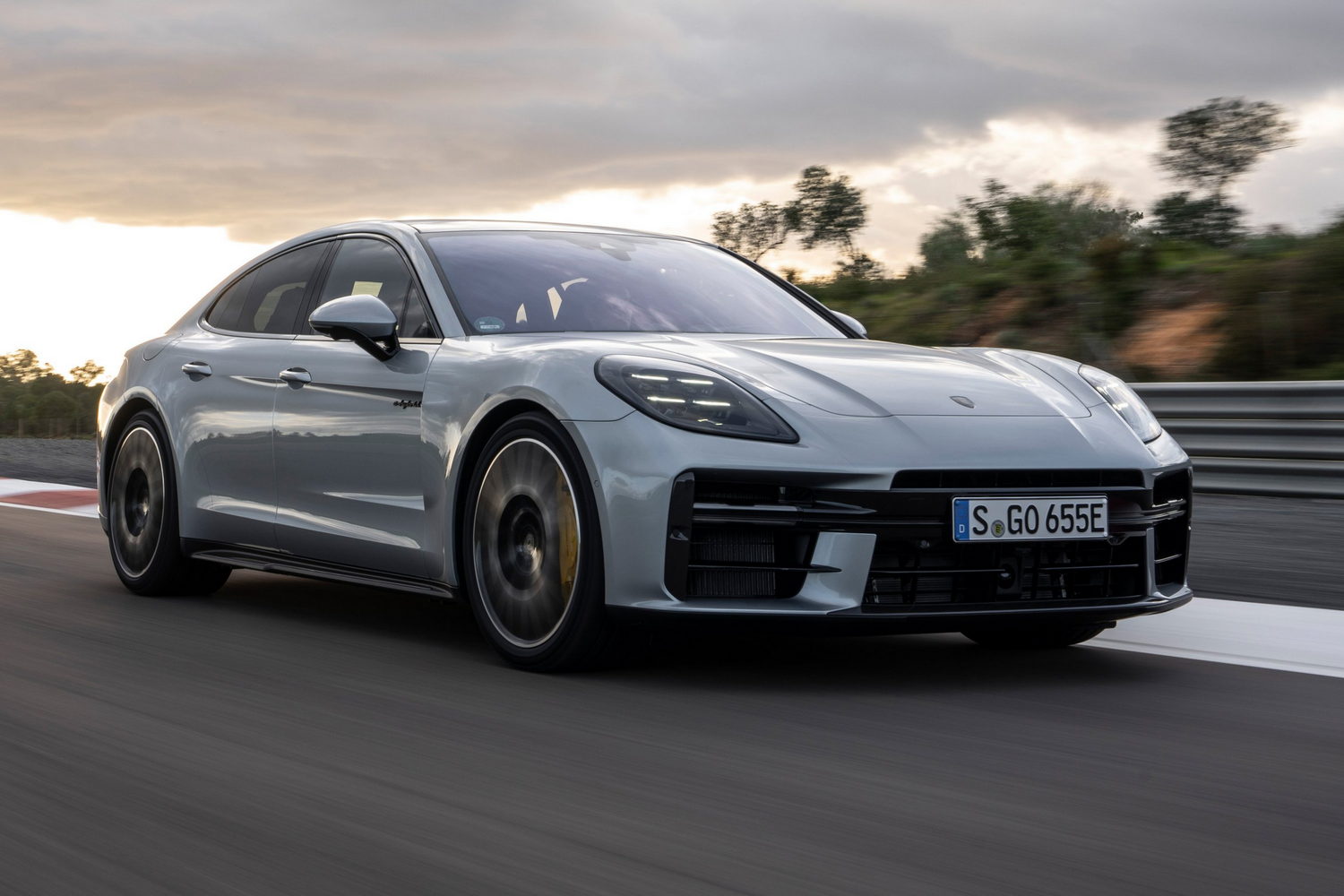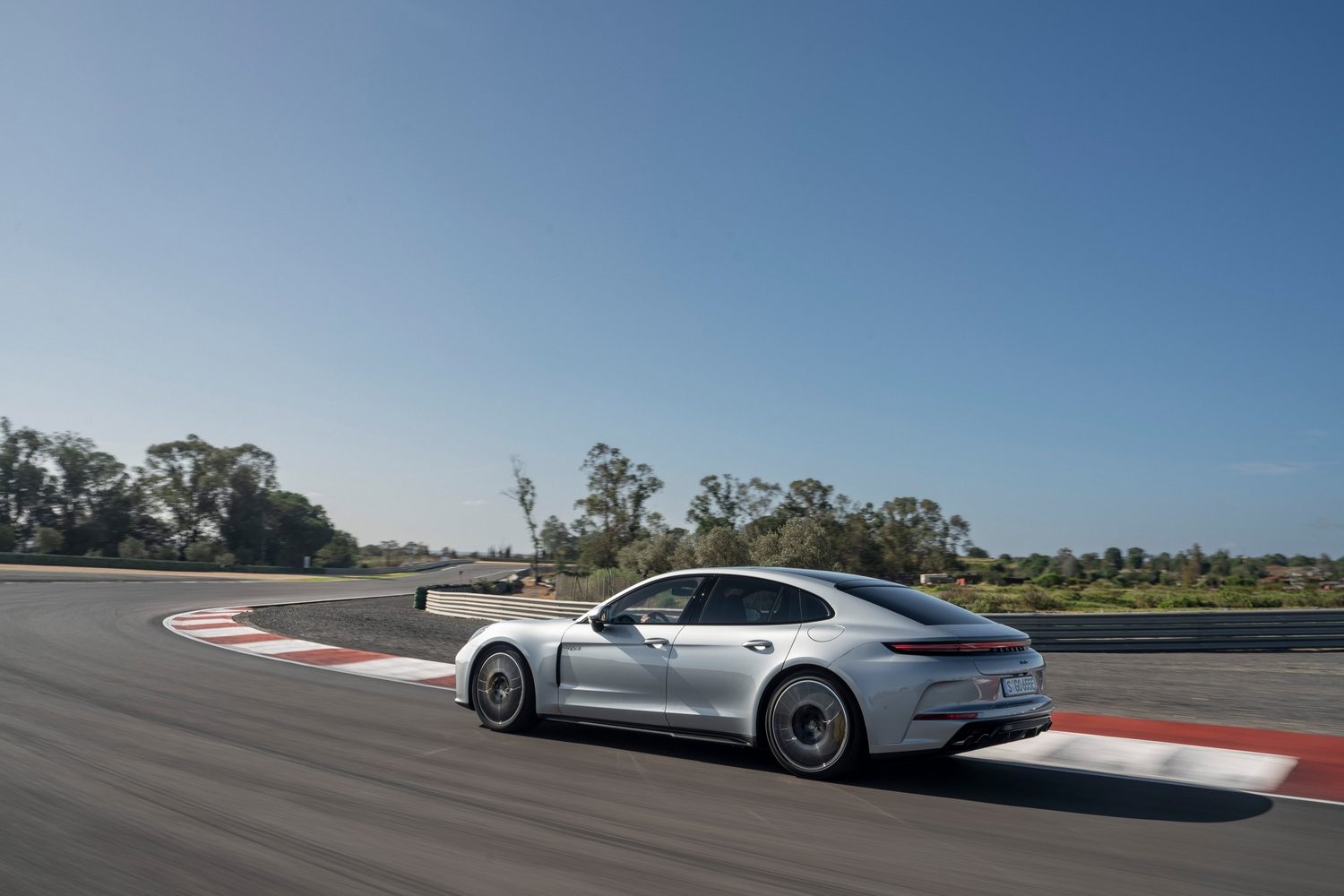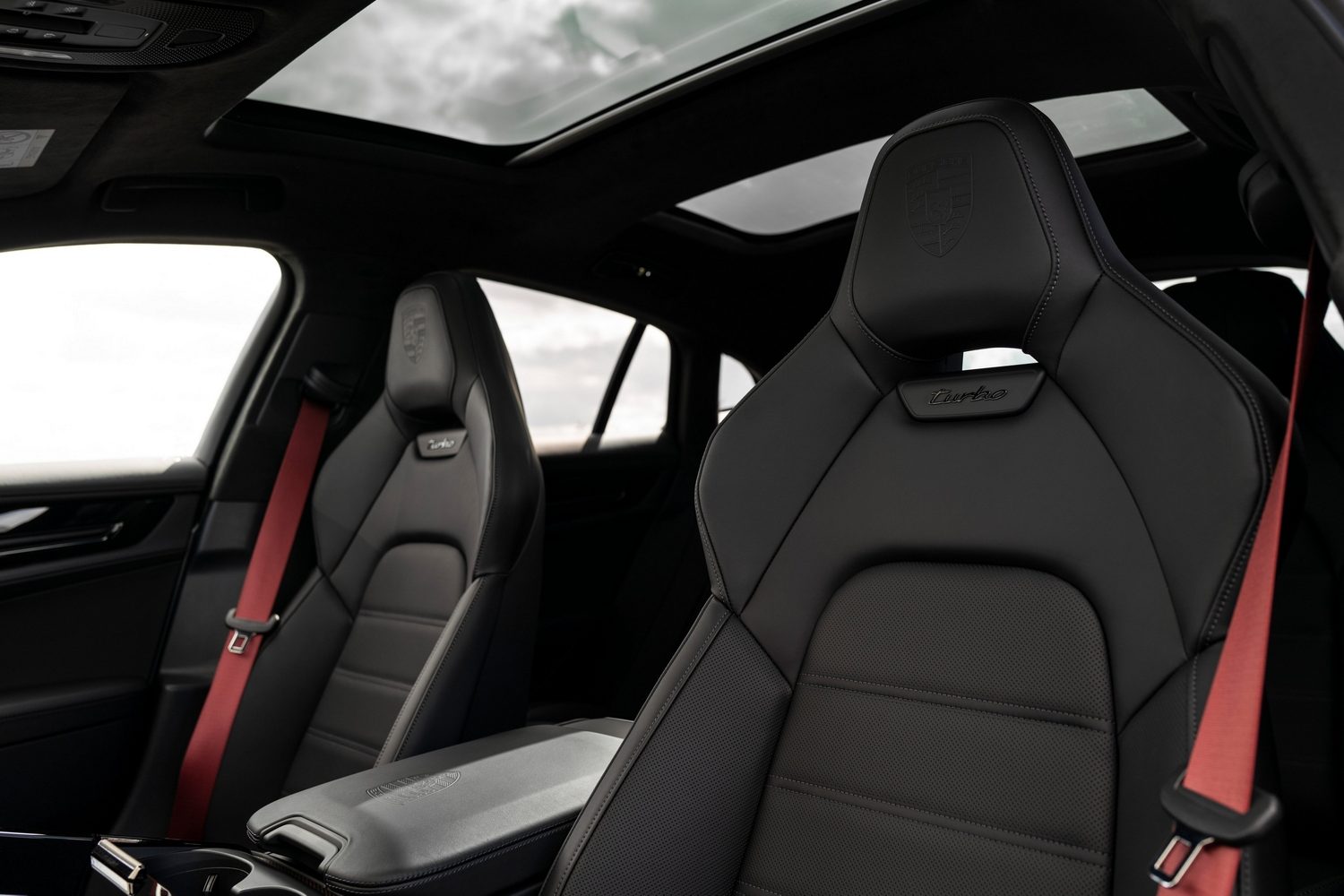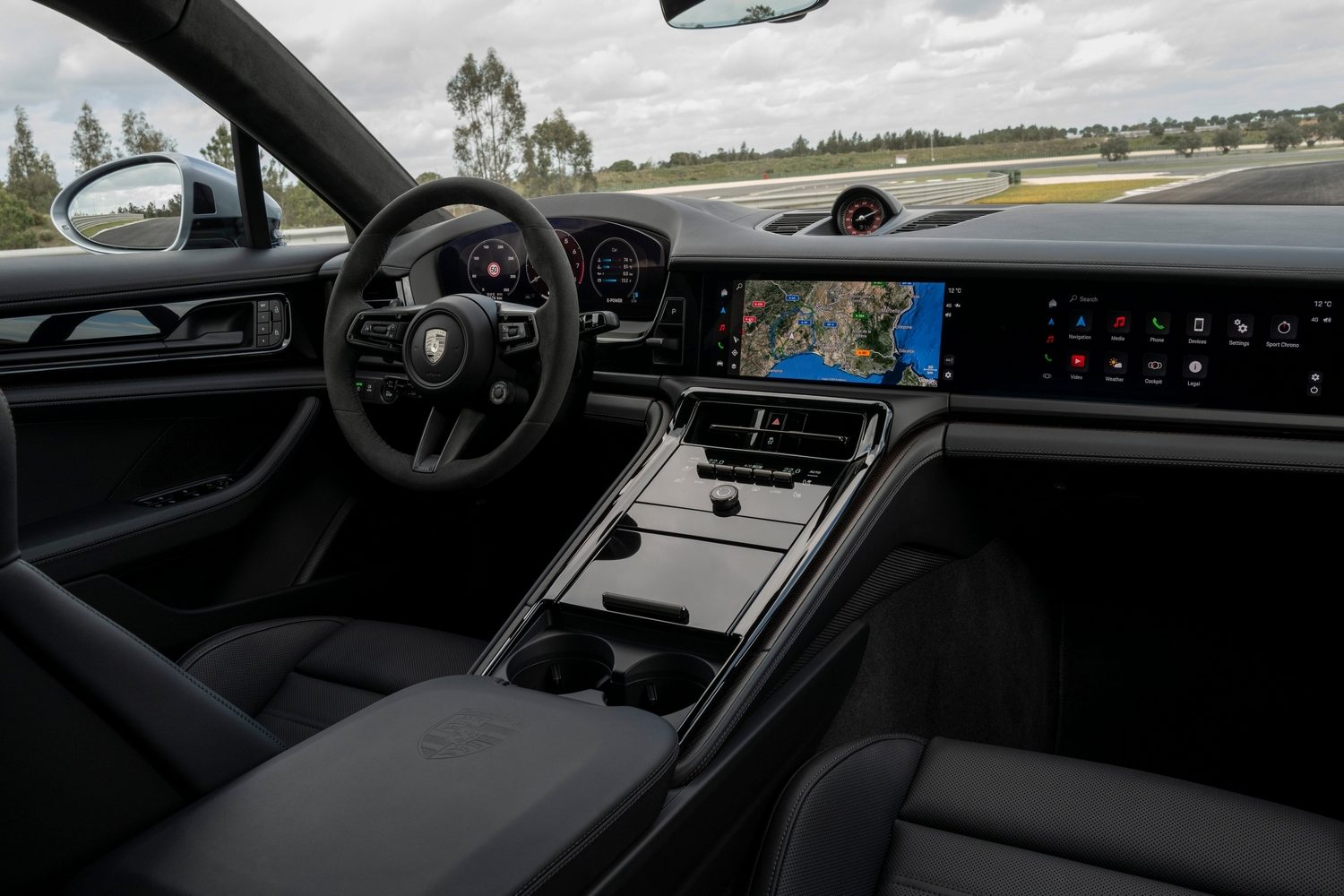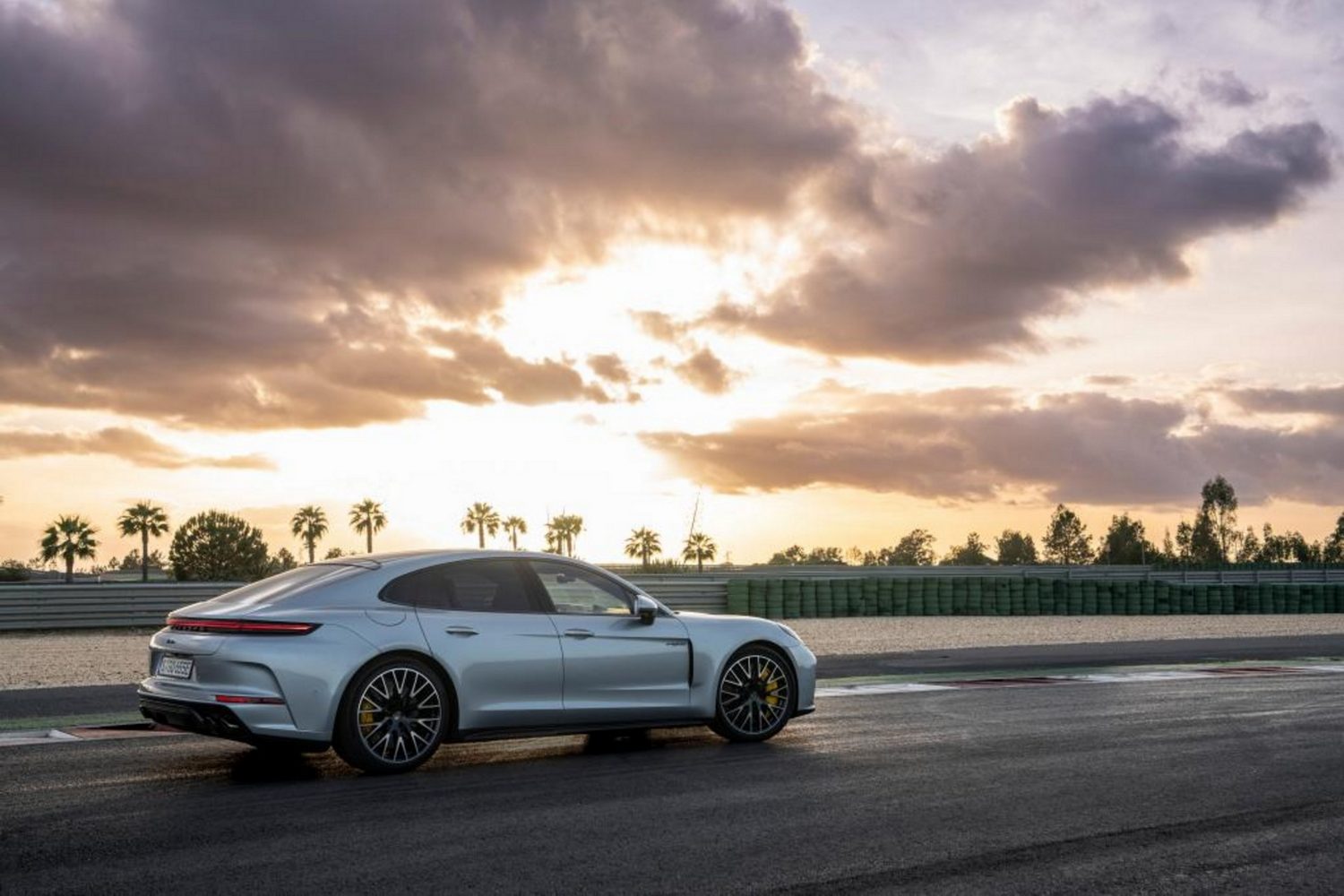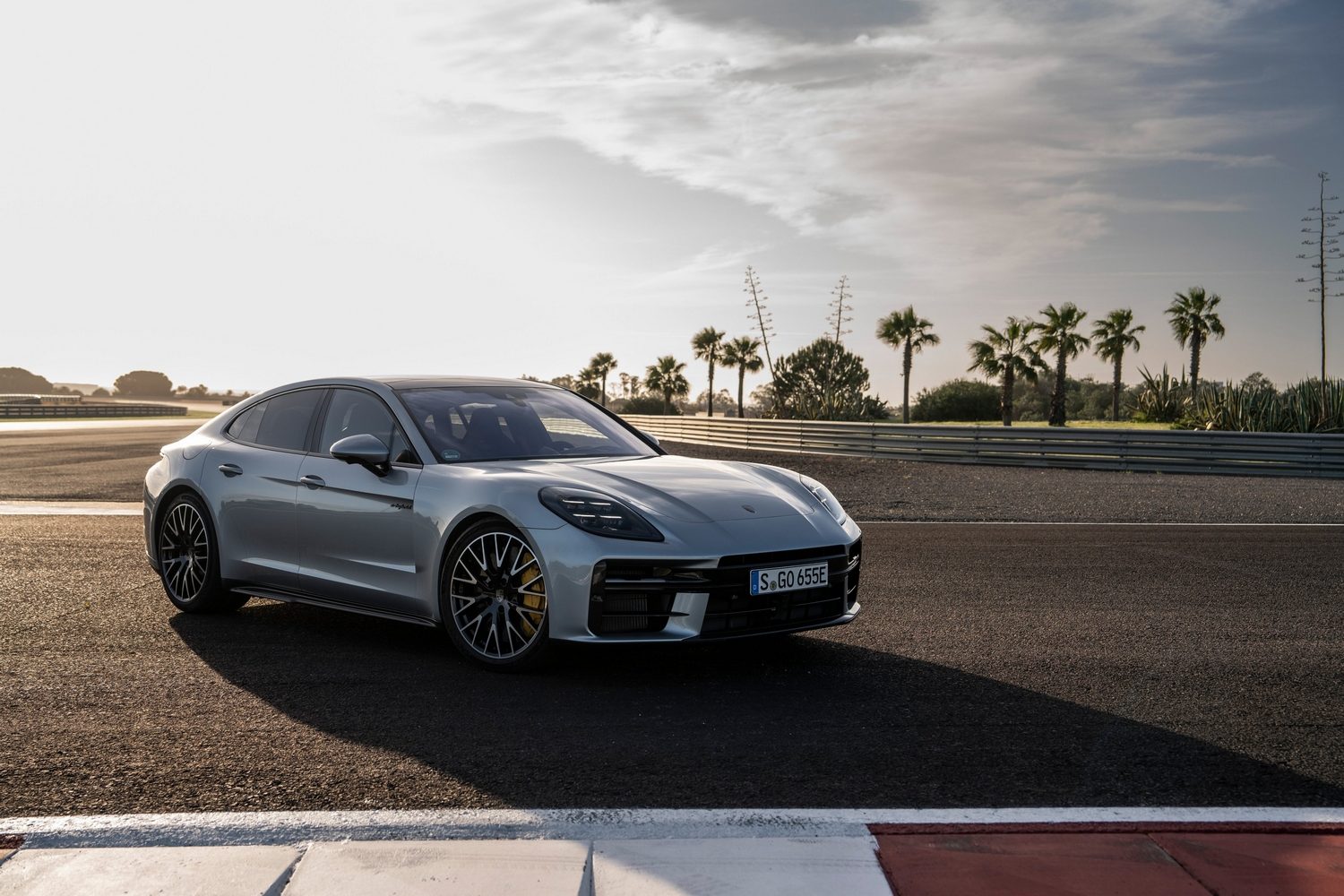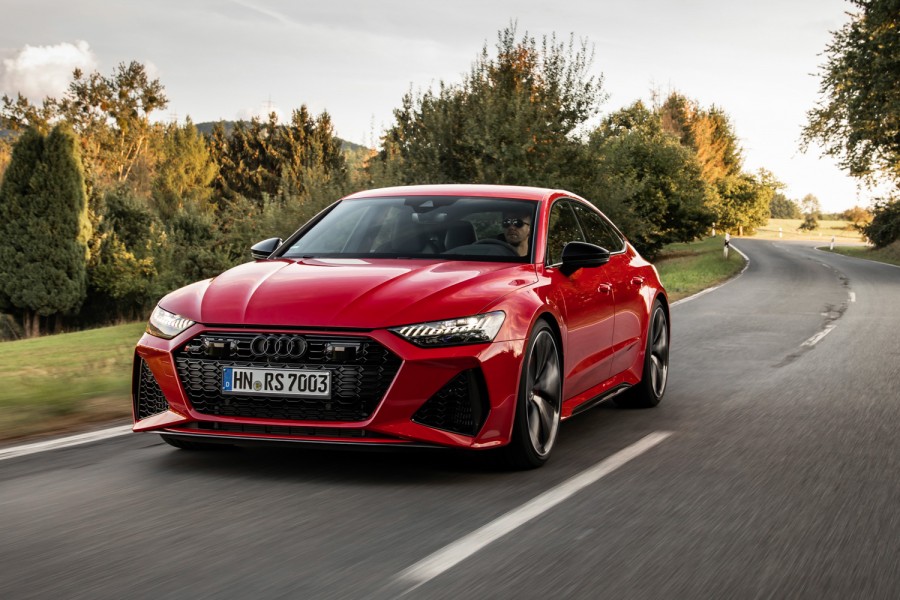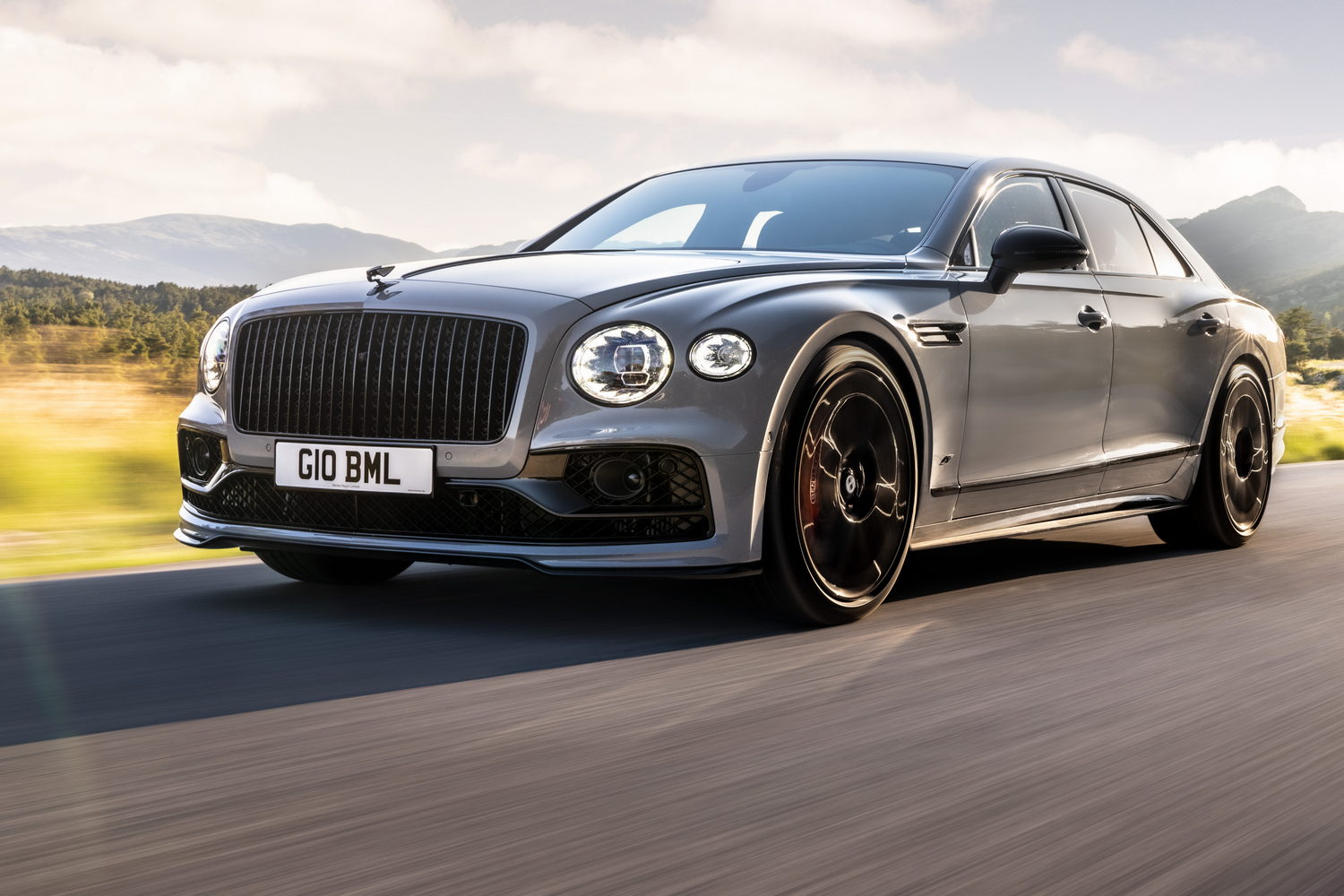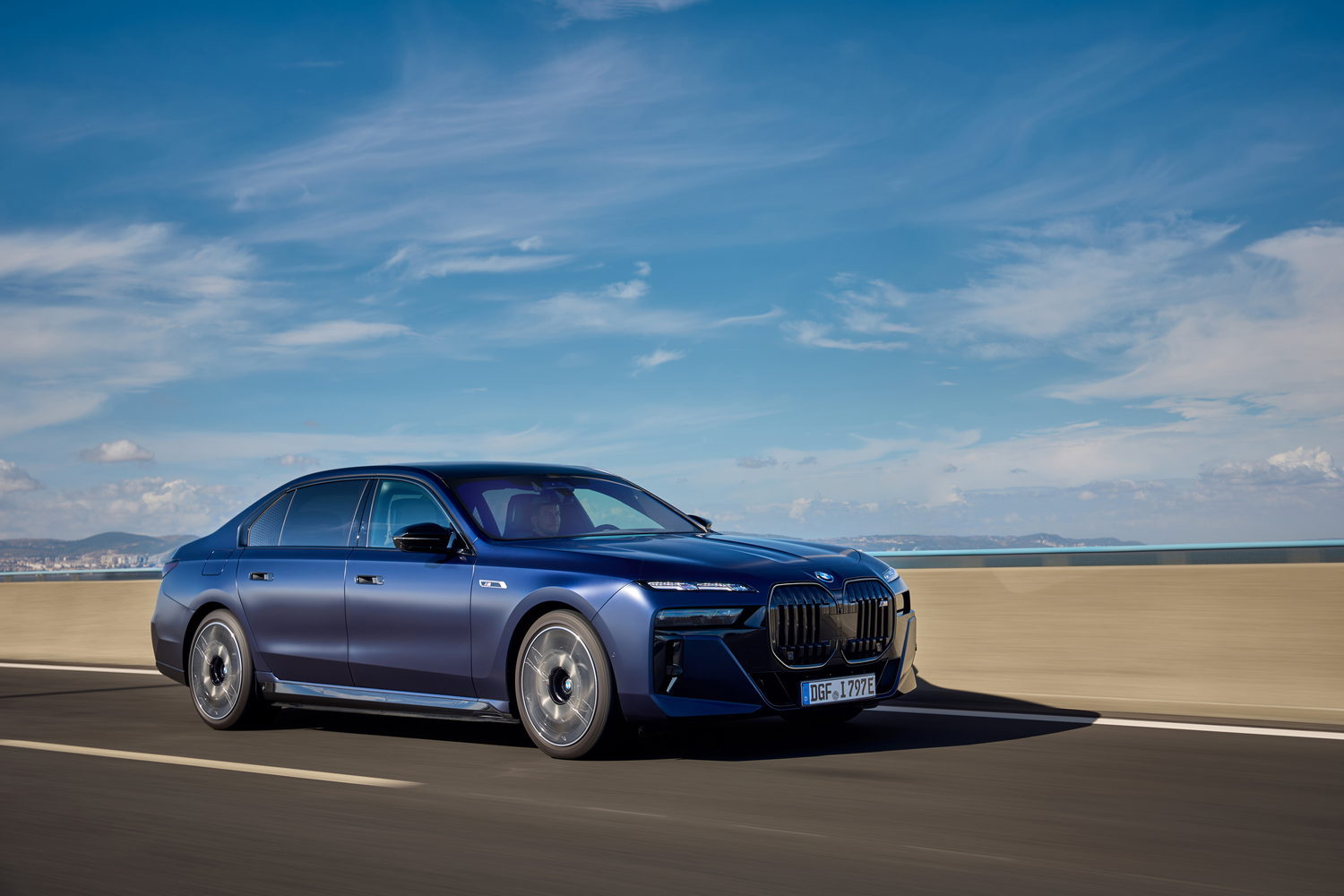Porsche revives the Panamera luxury executive car for another outing, this time placing a strong emphasis on plug-in hybrid power for most of its drivetrains. The most potent of them all is the outrageous 680hp Turbo E-Hybrid, but it's not necessarily the straight-line speed which sticks with you about this ultimate Porsche fastback - it has another (optional) party trick that really is quite mesmerising...
In the metal
All the new Panamera models look broadly like the older car they've just replaced in the Porsche line-up, but this isn't necessarily a bad thing as the German company's big saloon (it's actually a five-door fastback, given the way the tailgate opens up fully, but Porsche wants to call it a saloon) is a handsome device. The changes for the latest version amount to a squarer front air intake, complete with a strip-like vent in the bumper above, as well as more pronounced front wings (to make you subliminally think of the Porsche 911 sports car) and a smattering of new colours plus optional centre-lock alloy wheels.
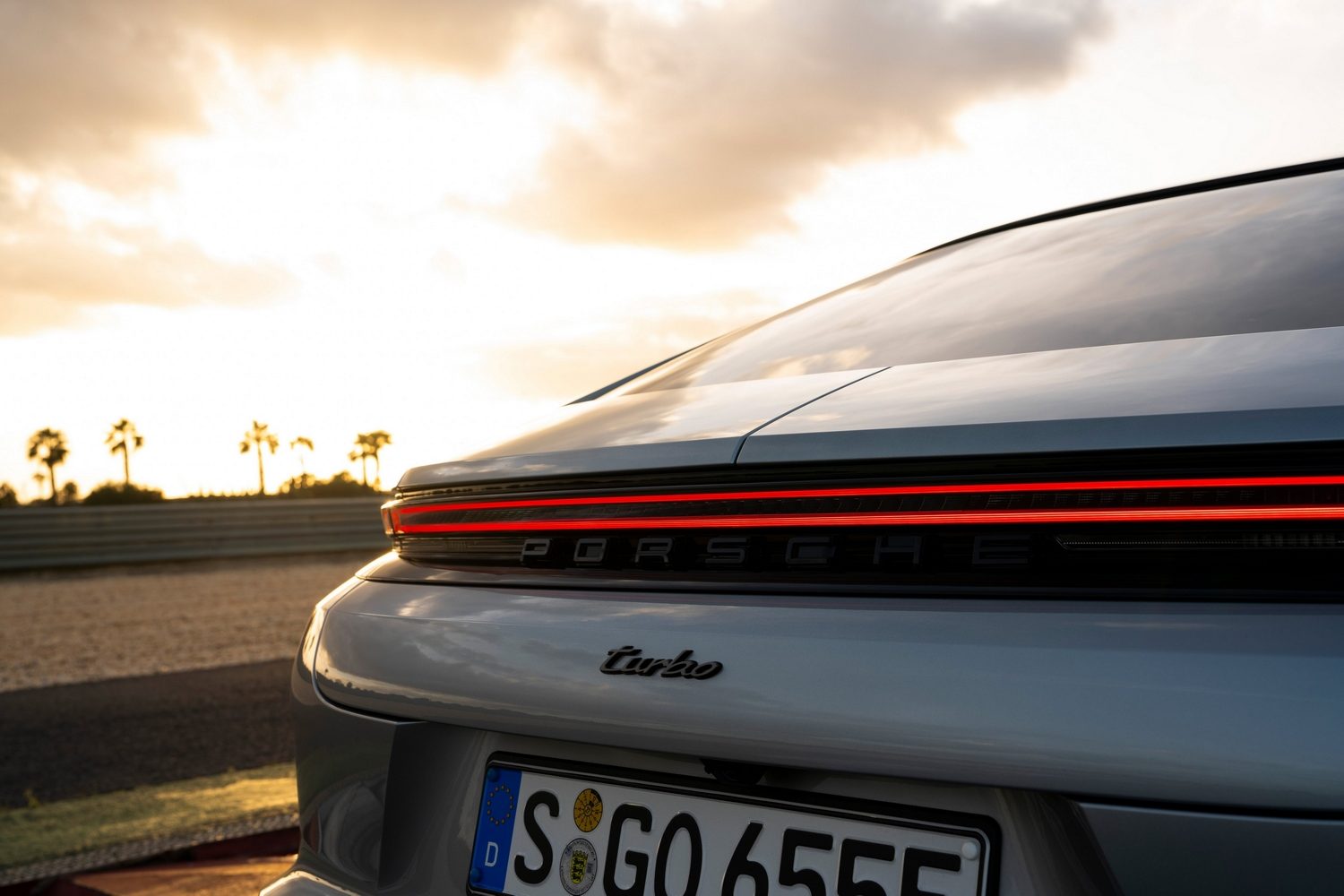
Elsewhere, it looks a lot like the old model, with a sloping rear (now fitted with a frameless window) punctuated by a full-width light strip at the back; overall, the new Panamera is a handsome car in any spec. But there won't be a Sport Turismo estate this time - it simply didn't sell well enough, nor offer a significantly larger boot, so Porsche has decided not to continue with it.
For the Turbo E-Hybrid, there are further specific signifiers beyond just the obvious badging on the back ('Turbo') and the leading edge of the front doors ('E-Hybrid'). This includes bespoke bumpers front and rear, with a contrast diffuser - housing quad exhaust pipes - at the back standing out, while the lower intakes in the nose are wider and more aggressive on this ultimate hybrid version. Then there's 'Turbonite'. It's a metallic grey colour and Porsche uses it for much of the exterior detailing, right down to the company crest on the bonnet, to mark out the flagship Panamera, with the theme continuing inside.
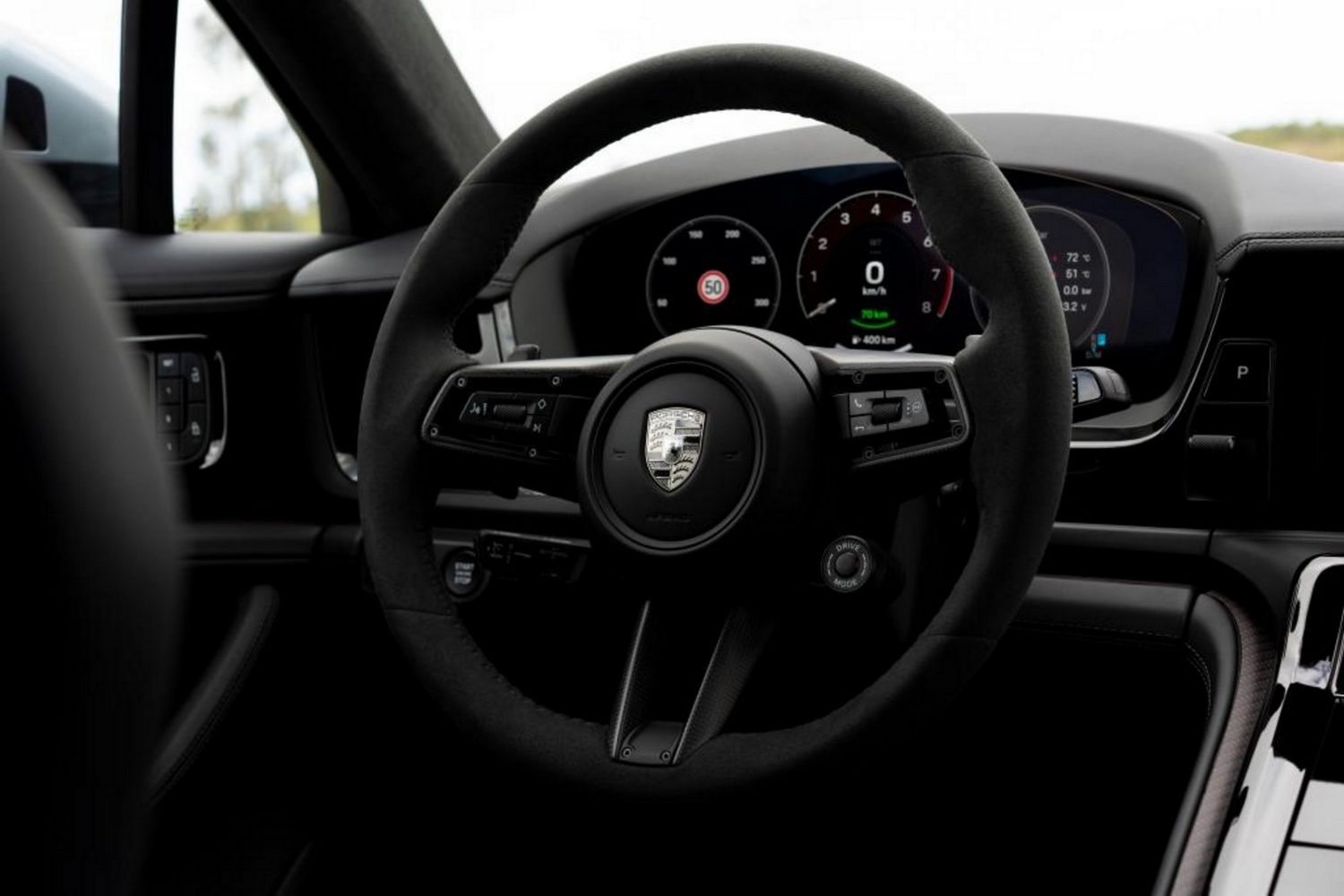
Speaking of which, the passenger compartment is wonderful. The driving position is just like a sports car's, as you sit low down and ensconced by a fascia which takes much inspiration from the company's own Taycan electric vehicle. Behind the perfectly sized and shaped steering wheel is the 12.6-inch 'Curved Display' instrument cluster, lacking for a cowl, with the superb 10.9-inch Porsche Communication Management (PCM) infotainment sitting in the centre of the dash. There's the option to have a 10.9-inch passenger display for the front-seat occupant who's not driving, too, but Porsche sensibly keeps physical climate controls on a discrete panel on the transmission tunnel, while other switchgear is clustered around the wheel for minimal reaching - this includes the gear selector, now a stubby little lever mounted vertically on the dashboard.
Material quality is generally exceptional throughout, although the way the entire climate panel moves when you just click, say, the heated seats is a little disconcerting, but there's little doubt the Panamera's interior cuts the mustard in terms of its premium status. Space is also good in the back for adults, thanks to the car's long wheelbase and a scalloped headlining in the rear, although as standard the Porsche is a four-seat car, with a '4+1' option bringing a third three-point seatbelt and a central squab to proceedings. Yet the resulting seat doesn't really look that usable by anyone, especially given how wide the transmission tunnel is in the footwell.
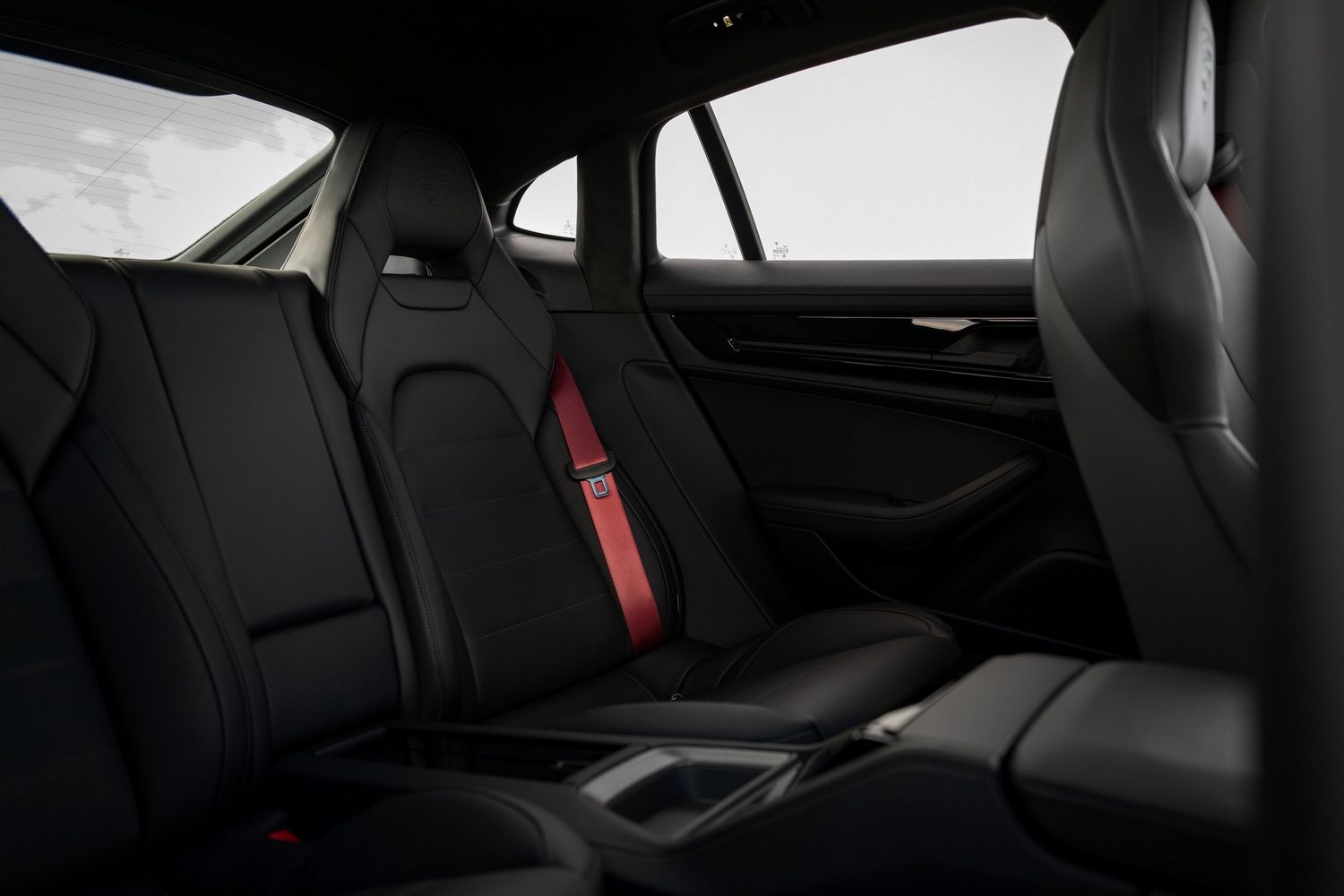
One final practicality point: as an E-Hybrid, the Turbo loses a bit of boot space compared to the plain petrol Panameras, rating 421 litres with all seats in use and 1,255 litres with the 40:20:40 split backrests folded down because the battery pack for the hybrid gear lives underneath the boot floor. In the Panamera and Panamera 4, there's 494-1,328 litres.
Driving it
There has been a part-electric version of Porsche's flagship from 2011 onwards, with the first plug-in model appearing in 2013. A decade's worth of fuel-saving expertise now results in a product line-up that's heavily skewed towards plug-in hybrids (PHEVs), rendered in Porsche-speak as 'E-Hybrid' in the badging.
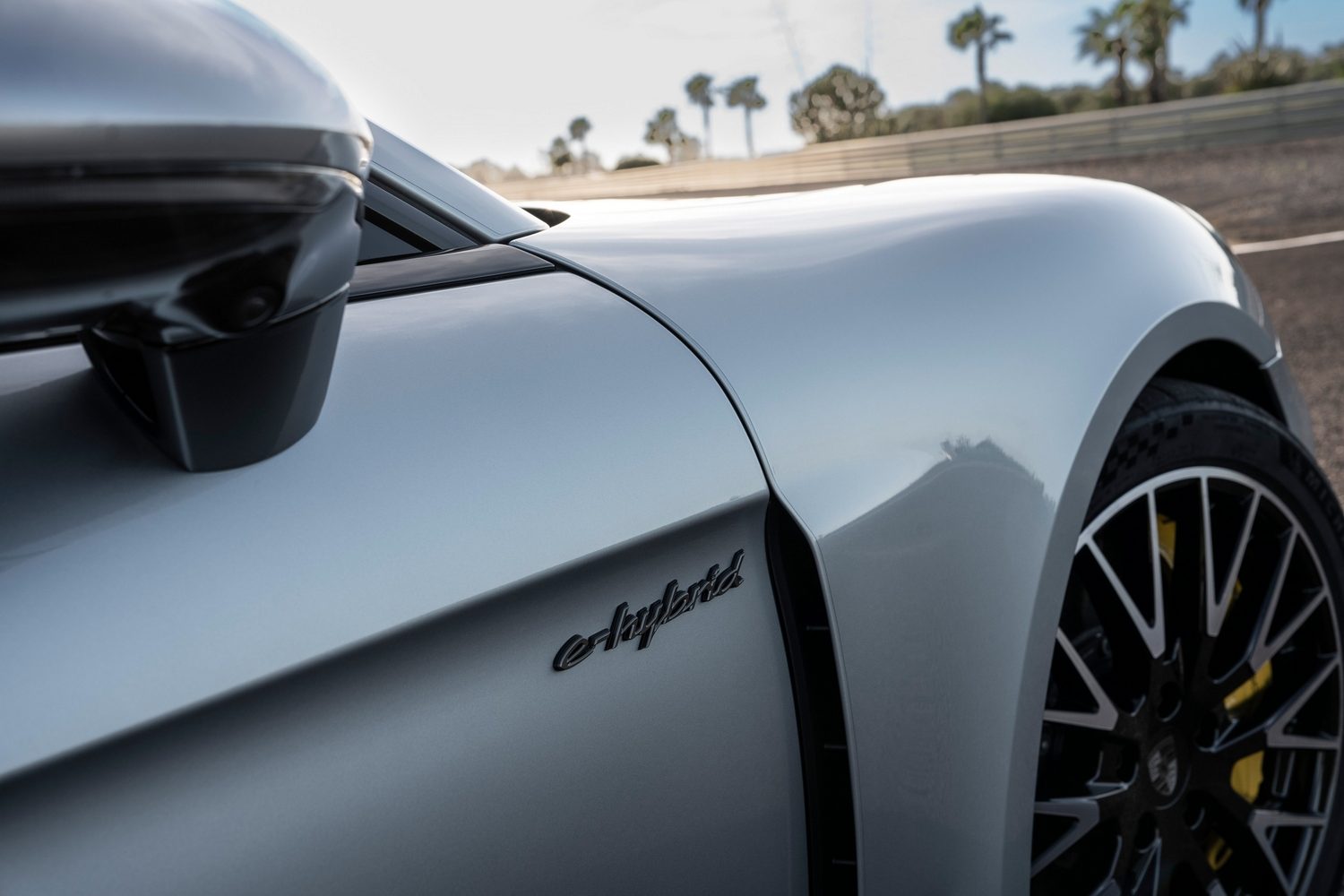
Three out of the five launch models in this third generation Panamera are PHEVs, and they form the upper portion of the range, leaving the V6-only Panamera and Panamera 4 to prop up the portfolio. Two of the E-Hybrids are based on the same V6 petrol engine in those base-spec cars, these being the 470hp Panamera 4 E-Hybrid and the 544hp Panamera 4S E-Hybrid, which leaves the car we're driving here as the clear flagship.
The Turbo E-Hybrid is the only new Panamera so far fitted with an engine larger than the 2.9-litre V6 underpinning all the other four models. It is powered instead by a 4.0-litre twin-turbo V8, augmented by Porsche's uprated new hybrid running gear - this means a 140kW permanent magnet synchronous electric motor hooked up to a 25.9kWh lithium-ion battery pack. This arrangement bolsters the V8, giving the Panamera Turbo E-Hybrid heady combined outputs of up to 680hp and 930Nm.
It's not quite as powerful as the PHEV flagship of the Cayenne SUV, a variant which uses exactly the same model badging, but the Panamera is lighter at 2,435kg, so thanks to its Porsche Traction Management (PTM) four-wheel drive and a twin-clutch PDK eight-speed transmission - another point of differentiation from the Cayenne Turbo E-Hybrid, which has a torque-converter Tiptronic gearbox instead - the ultimate Panamera is ferociously quick. It will run 0-100km/h in just 3.2 seconds and its top speed is well beyond 300km/h, although interestingly it can do up to 140km/h on its electric power alone. It'll also reputedly travel up to 91km without having to resort to its 4.0-litre engine at all. Though not if you're travelling at 140km/h, of course.
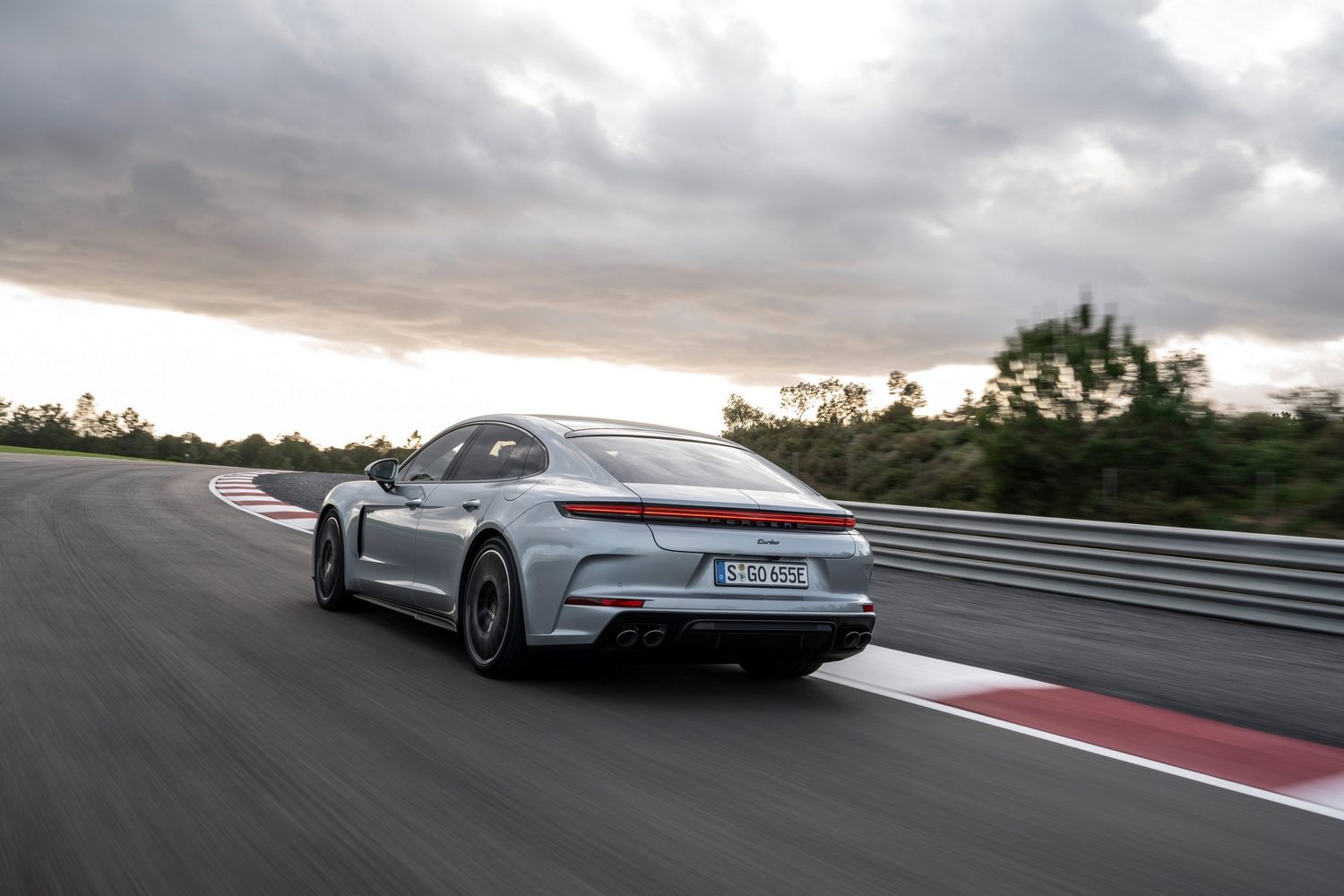
Porsche only let us drive the Turbo E-Hybrid on a race circuit for a few fast laps, as well as demonstrating one of the clever options for the car, called Porsche Active Ride. So, while we can't bring you a full report yet regarding the on-road rolling refinement and comfort levels, what we can say is that the top-dog Panamera PHEV is ludicrously fast. With its petrol-electric drivetrain in Sport Plus mode, it hits phenomenally hard in pretty much any gear in its PDK at whatever engine revs you choose, while it also sounds magnificent thanks to the V8 under the hood. Around a fast yet technical circuit, a 2.4-tonne saloon really shouldn't be anything like as capable or as rewarding as the Panamera Turbo E-Hybrid was for our brief blast.
Yet it's the Porsche Active Ride (PAR) which will live on in our memories for far longer than the explosive power of the Panamera's 680hp drivetrain. This option is only available on the E-Hybrid models, as it requires their electrical systems to power it. Superseding the standard-fit twin-chamber adaptive air suspension (with two-valve Porsche Active Suspension Management dampers and physical anti-roll bars underneath the car), which Porsche calls a semi-active set-up, PAR is fully 'active'. It does without the anti-roll bars entirely, switches the air chambers at all four corners to single, larger items, and then performs little short of witchcraft to keep occupants of the vehicle comfortable at all times.
It does this through three main functions, which are active pitch control, active tilt control and Comfort Entry. Active pitch control prevents you feeling any sensation of pitch at all, which is when a car accelerates and all its mass is transferred backwards. This makes the nose of the car 'rear up' and you get a sense of being pushed back in your seat. PAR negates this by pre-emptively using its air springs to force the nose of the car back down by up to three degrees, meaning you feel the physical press into the seat, but the Panamera's sizeable body doesn't move an inch relative to the wheels.
It can do the same trick with braking, where now the nose would like to dip down towards the road surface during heavy retardation (in a process known as 'dive') - instead, the PAR pushes the rear 'springs' down by up to three degrees to prevent that feeling of you being pitched forward against your seatbelt.
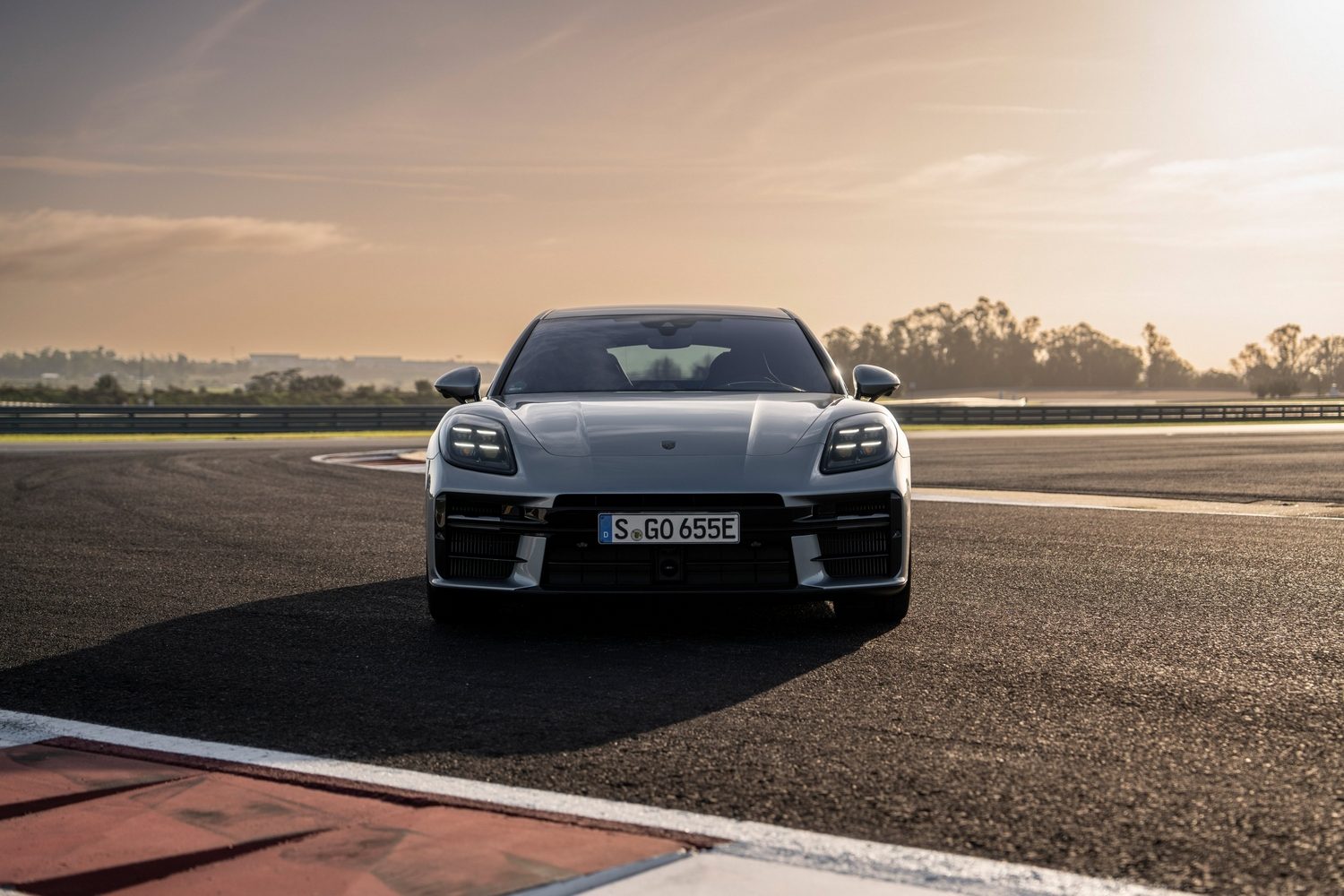
Active tilt control does a similar job, again with up to three degrees of lateral movement, only this time it is preventing body lean in corners. So, if you turn right at higher speeds, the right-hand air springs depress to keep the car's shell flat - vice versa for left. It's like a motorcyclist leaning the bike into the bends... only the car does it automatically with its own body. And Comfort Entry is a brilliant feature where the Porsche immediately pops up on its tiptoes by 55mm when stationary the minute anyone opens any of its doors; this aids ingress and egress to/from the Panamera's cabin.
We watched a PAR-equipped Turbo E-Hybrid drive at 50km/h over a series of ferocious bumps, and while the 21-inch wheels in its arches were bobbling up and down at almost their maximum rate of travel, the body of the car remained resolutely flat. We watched it perform full-bore standing starts off the line, all 680hp and 930Nm hurtling the Panamera forward before it then took on a high-speed slalom and a couple of full-on emergency stops - braking hard enough to trigger its hazard-warning lights to flash. And guess what? The body of the car remained resolutely flat. We drove it ourselves, took it out on track and swerved from side to side reasonably violently, and... yep, you've got it: the body of the car remained resolutely flat.
Porsche Active Ride is a quite incredible system and while it's not the first of its type in the industry - Mercedes has had the similar Active Body Control for some years on the SL, for instance - we've never seen it work as effectively as this. It's a little eerie at times and there is the occasional disconnect between what your eyes are seeing and what your brain/body is experiencing in terms of g-forces that can almost make you queasy, but there is little doubt that we think PAR is a most worthwhile upgrade for the Turbo E-Hybrid. Having watched a non-PAR-equipped model do the same acceleration/slalom/braking tests as the one with the magic suspension, it's not as if the standard semi-active set-up is poor, but the body of the car does move around far more visibly during weight transfer phases.
What you get for your money
With an official CO2 figure no higher than 38g/km, the Porsche Panamera Turbo E-Hybrid benefits from our VRT system and is not much more expensive than the far less powerful (353hp) V6 Panamera and Panamera 4 models that are ostensibly at the other end of the range. Granted, the Turbo is still the dearest model with a chunky €180,751 basic price tag, but for that money you get the astonishing performance and handling of the V8 hybrid, as well as reasonable running costs if you can charge it and use the electric portion of its drivetrain on a daily basis.
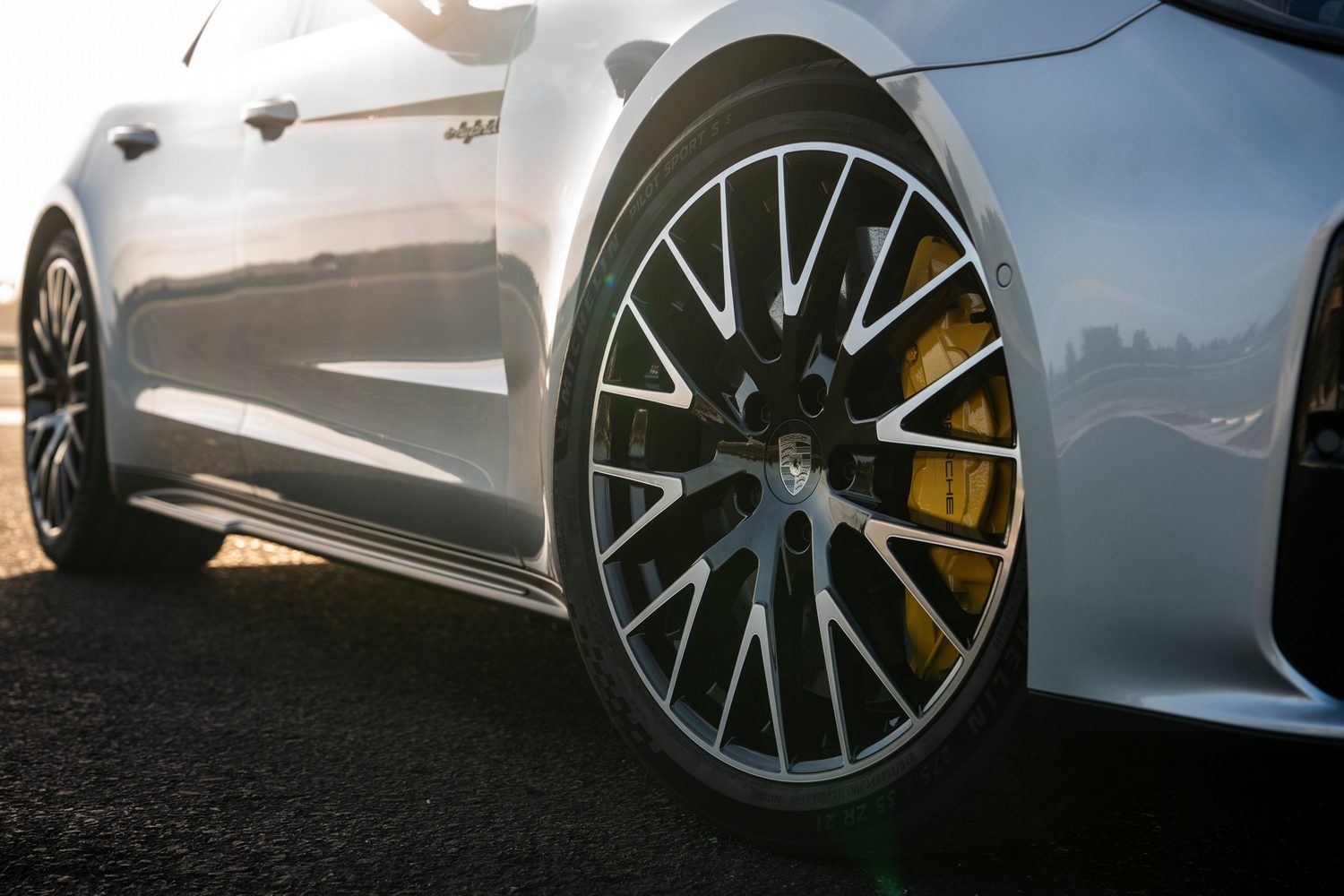
Standard equipment on this flagship model is fulsome, too, though there are still plenty of cost options to push the Turbo E-Hybrid's price higher (not least that trick suspension), and here in Ireland you would arguably be just as well off with one of the two V6 PHEVs, either the €115,762 Panamera 4 E-Hybrid or the €130,656 4S E-Hybrid.
Summary
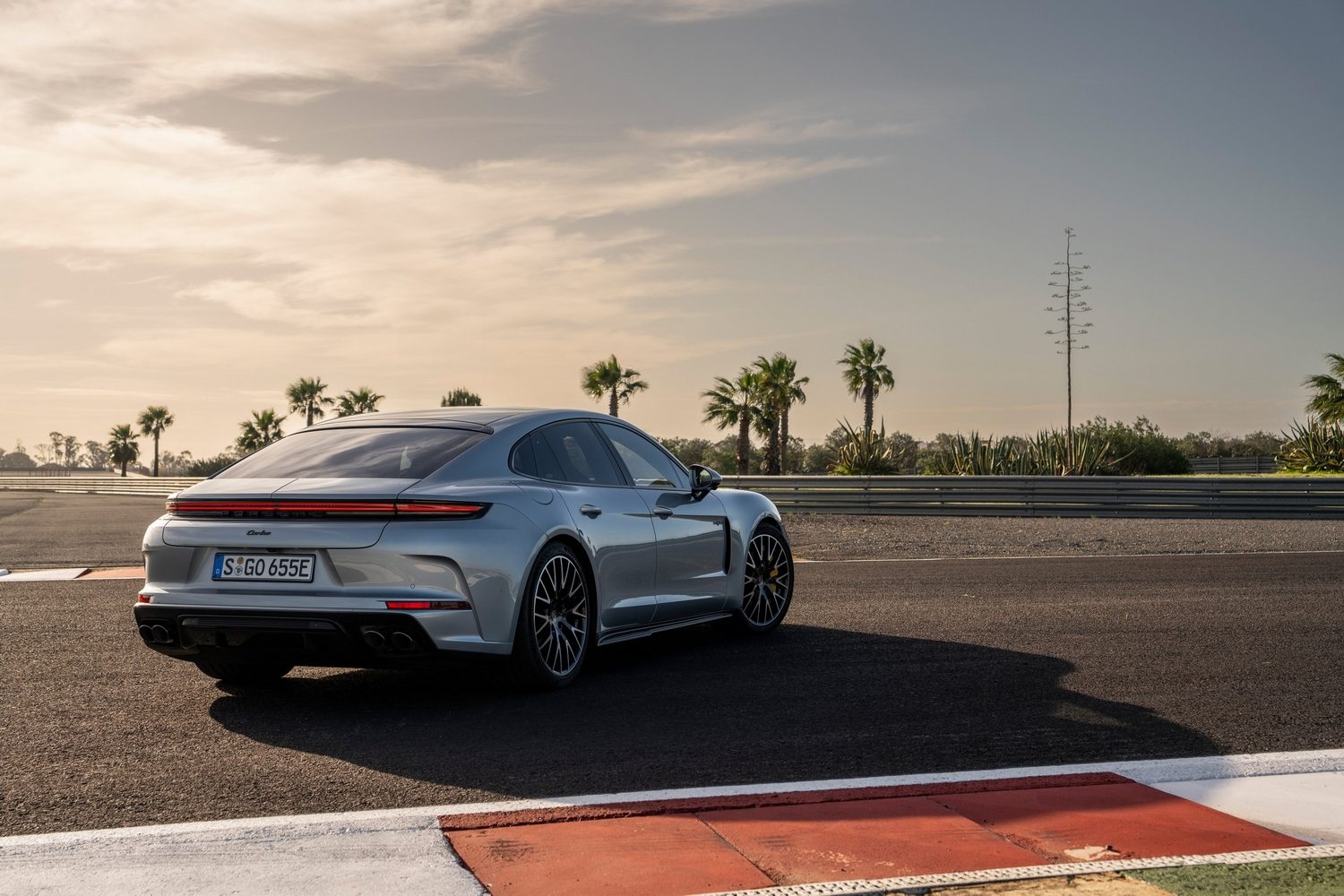
We're itching to get the Porsche Panamera Turbo E-Hybrid out on the public road, preferably with the spooky suspension, to see just how good it is for everyday comfort. But on this basis, though it's an expensive and niche-interest car in many ways, the V8 plug-in hybrid Panamera already looks like it is a thoroughly blinding bit of kit. It's just a shame that the company isn't going to do it as a Sport Turismo this time around.

